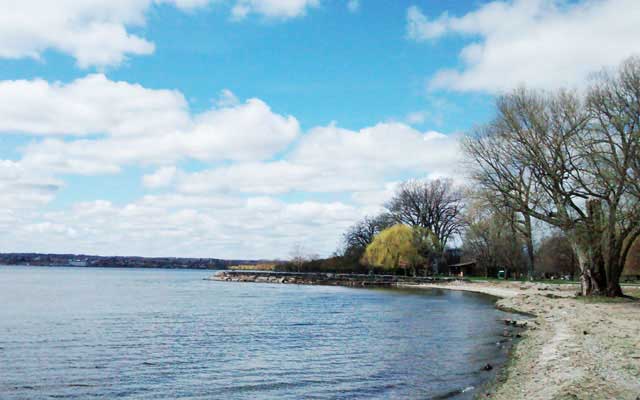SENECA DRUMS
For hundreds of years, people around Seneca Lake have talked of strange “booms” coming from the lake. A long time legend, many have described the sound as one of distant cannon fire. According to folklore, the sounds are a message from the Iroquois who inhabited the area hundreds of years ago, while others believe they are simply the result of geothermal reactions.
“The ‘Lake Gun’ is a mystery,” wrote James Fenimore Cooper in 1850. “It is a sound resembling the explosion of a heavy piece of artillery, that can be accounted for by none of the known laws of nature. The report is deep, hollow, distant and imposing. The lake seems to be speaking to the surrounding hills, which send back the echoes of its voice in accurate reply. No satisfactory theory has ever been broached to explain these noises.”

THE LEGEND
Over the years, there has been no shortage of lively explanations for the thunderous booms that have arisen out of the depths of Seneca Lake. The most ancient myths, held by the Iroquois Indians, were considered mere superstitions by early white settlers. Nevertheless, the myths multiplied as the years went by.
Seneca Indians believed that the booming sounds came from the Great Spirit, who swallowed up Agayenthah, the tallest and bravest of all the warriors. Agayenthah was hunting bear and took refuge under a shoreline tree when a thunderstorm came. Lightning struck, and he and the tree fell into the lake. The following day, the Seneca people heard the drums for the first time, which they interpreted as the Great Spirit’s curse upon Agayenthah’s violation of sacred hunting codes.
Others claimed that the sounds were the drums of their ancestors, evil spirits inhabiting the lake, signals from the God of Thunder, or residual sounds leftover by the Great Spirit when the earth was created. Another myth described that the drumming came from a soldier from the post-Revolutionary War, whose actions taken against the Iroquois caused him to lose his way forever, searching for his regiment.
SCIENTIFIC THEORY
Fast-forward to 1934, when area scientists searched for explanations for the phenomenon. According to Herman Fairchild of the University of Rochester, “the explanation is bubbles of natural gas escaping from a layer of sandstone deep in the earth and coming up through the waters of the lake, where they burst with a booming sound.” His interpretation was confirmed in 1971 by Dr. William F. Ahrnsbrak of Hobart and William Smith Colleges. Ahrnsbrak added that “it’s conceivable that the layers of mud at the lake bottom intersect with rocks with natural gas, causing the bursting of natural gas bubbles.”
The reports of Seneca Drums have gradually decreased in recent history, especially since salt mining and gas storage mines have opened. “Poking holes provided another outlet for the gas,” one report stated. Carol U. Sisler, author of Seneca Lake: Past, Present and Future, agreed with the gas bubble theory. “Within the sandstone layer, gas sought an outlet, forcing its way through many layers of glacial drift on the lake bottom. Ascending through 500 to 600 feet of water, the decreasing pressure would allow the gas to expand to 20 to 40 times its original volume, and it would reach the lake’s surface as a large bubble. When the bubble burst and the displaced water receded backward, the booming would result.” But when natural gas fields were developed near Tyrone, New York, in the 1930s, “the lake guns were stilled.”
